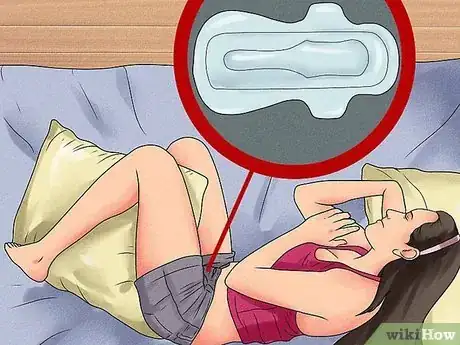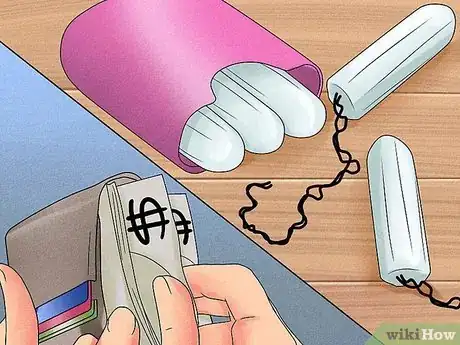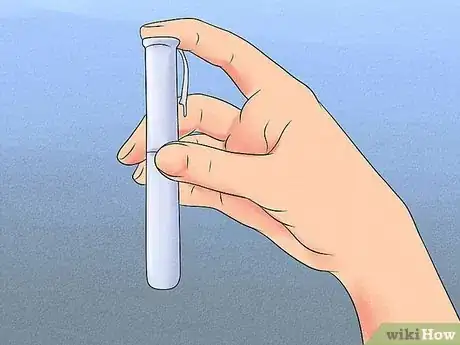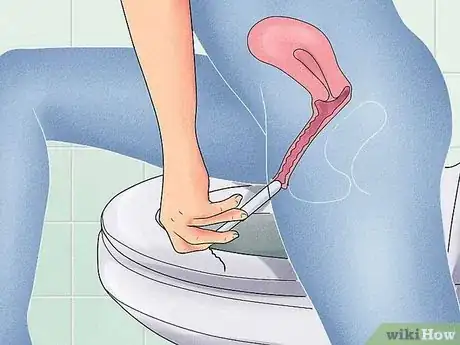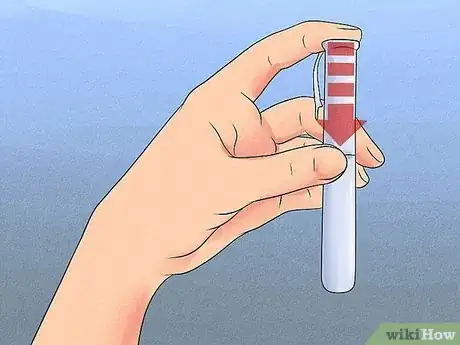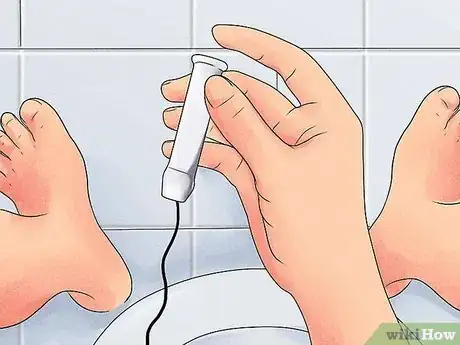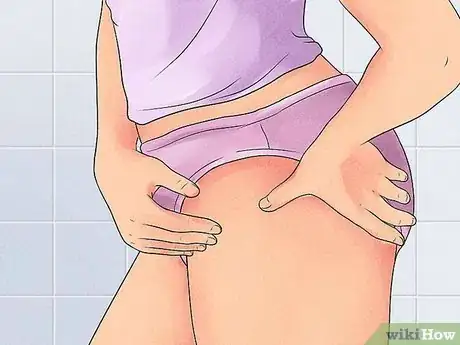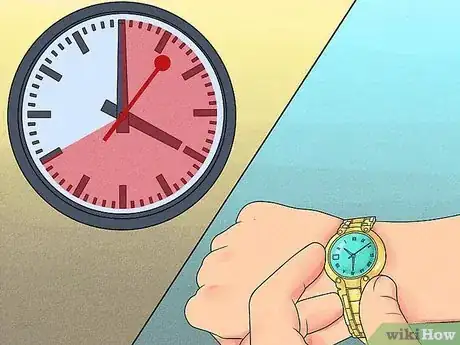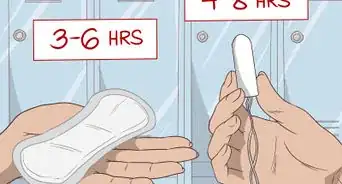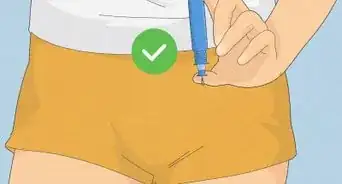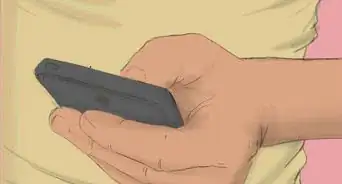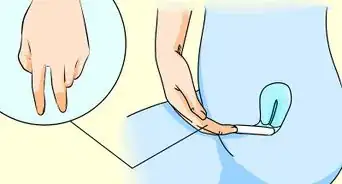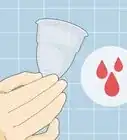This article was co-authored by Rebecca Levy-Gantt, MPT, DO. Dr. Rebecca Levy-Gantt is a board certified Obstetrician and Gynecologist running a private practice based in Napa, California. Dr. Levy-Gantt specializes in menopause, peri-menopause and hormonal management, including bio-Identical and compounded hormone treatments and alternative treatments. She is also a Nationally Certified Menopause Practitioner and is on the national listing of physicians who specialize in menopausal management. She received a Masters of Physical Therapy from Boston University and a Doctor of Osteopathic Medicine (DO) from the New York College of Osteopathic Medicine.
There are 12 references cited in this article, which can be found at the bottom of the page.
wikiHow marks an article as reader-approved once it receives enough positive feedback. This article received 49 testimonials and 83% of readers who voted found it helpful, earning it our reader-approved status.
This article has been viewed 5,641,323 times.
Using a tampon for the first time can be confusing, especially if it is your first time dealing with a period, but don't worry. It's simple once you get the hang of it.
Steps
Dispelling a Few Myths with the Facts
There are a lot of urban legends about using tampons, and you might have already heard some bad information on how to use them. Knowing the facts can dispel your fears and clear up any misunderstandings.
-
1Be reassured that a tampon will never get stuck or lost inside you.[1] Honestly, there's nowhere for it to go![2] The cervix, at the end of the vagina, only has a tiny opening to allow blood through. You can always pull it out by the string, or reach in and grab it with your fingers if the string breaks.
- Don't forget to remove all tampons by the end of your period, though!
-
2Be aware that you can still go to the bathroom with a tampon in. Just gently lift the string so it is out of the way.
- Alternatively, you can carefully tuck the string in, just so that it is out of the way when you pee. Tuck the string in shallowly, so that you can still feel it when you reach for it.
Advertisement -
3Realize there is no minimum age to start using a tampon.[3] You can start using tampons at any age, make sure to be comfortable first––you don't have to be over 18. Some girls skip using pads and go directly to using tampons, especially if they do sports like swimming or gymnastics.
-
4Understand that using tampons doesn't make you lose your virginity.[4] Contrary to one particularly unhelpful myth, using tampons does not make you "lose your virginity." Tampons might stretch the hymen (the thin membrane that usually stretches when you have sex), but the hymen should not tear. The hymen only partially covers the vaginal opening and is intended to stretch and bend. Even if your tampon use does stretch the membrane (which can happen during other activities, too, like frequent horse-riding), it doesn't mean you're not a virgin.
- Another myth is that the hymen completely covers the vagina. Rest easy, your hymen does have an opening for tampon insertion and for your period to leave your body.
- The hymen normally will expand if you relax, but if you force a tampon through it while tense, your hymen may rupture. This can happen while doing sports, too.
-
5Make sure you have enough supplies, wherever you go. Whether you're off to work or school or out playing sports, always have spare tampons in your bag. Especially when first starting your period, it might be helpful to pack a small makeup bag with tampons, pantyliners, wet wipes, and a spare pair of panties.
-
6If you sleep more than eight hours, use a pad overnight. That way, you don't have to worry about hopping out of bed early to change a tampon, or even risk Toxic Shock Syndrome, a rare but serious medical condition that happens when the bacterium Staphylococcus aureus gets into your bloodstream.[5]
Before Insertion
-
1Buy tampons. As you've probably already seen in the grocery store, tampons come in a variety of types and sizes. Here's what's easiest for your first time:
- Buy tampons with applicators. Tampons come in two basic types: with applicators, or a plastic tube that will help you push the tampon up into the vagina. Having the help of an applicator will make life easier when you're first learning, so choose a box that includes them. (In the U.S., O.B. is the primary brand that sells without applicators––most other brands have them.[6] )
- Pick the right absorbency. Absorbency is a measure of how much absorbent cotton is in the tampon, ranging from light to heavy. [7] Most women use heavy absorbency tampons during the first day or two of their periods when bleeding is heaviest, and transition to lighter ones toward the end.[8]
- If you're concerned about pain, though, try buying light absorbency tampons. You'll have to change them more frequently, but they'll be slimmer and more comfortable. A good beginning tampon is Tampax Pearl Lite. You can also just get "junior" or "slim" tampons. Using a smaller sized tampon at first will help you get used to inserting them and they will also be easier to take out. You can buy heavier tampons later if you discover light absorbency doesn't work for you.
- If you have a heavy flow during the day, it may be handy to use a pantyliner or thin pad along with your tampon, in case the tampon overflows. Overflowing can happen even with heavy absorbency tampons, within 4 hours.
-
2Wash your hands. It might seem weird to wash your hands before you go to the bathroom, but it's a smart move in this case.[9] Tampon applicators are sterile, and washing your hands keeps any infection-causing fungus or bacteria off them.
- If you drop the tampon on the floor, throw it away. It's not worth saving a few cents or even a few dollars on a tampon if you have to go through an uncomfortable and painful infection.
Inserting the Tampon
-
1Sit on the toilet. Spread your knees farther apart than you usually might, so that you have maximum access and visibility while you figure this out, or you can squat and sit like a frog on the toilet seat.
- Alternatively, you can stand to insert a tampon, placing one foot on a higher surface such as a toilet seat. If this works better for you, give it a shot. However, most women prefer sitting on the toilet so that any stray bleeding is contained.
-
2Find your vagina. This is the most common hurdle first-time tampon users run into, and it can seem really daunting. Once you figure it out, though, you're set for life! Here's how to make it a little easier:
- Understand your anatomy. There are three openings: the urethra (where urine exits) at the front, the vagina in the middle, and the anus at the back.[10] If you already know where your urethra is, feel an inch or two behind it to find the opening of the vagina.
- Use the blood to guide you. This might sound weird, but it'll help if you're struggling. Wet a piece of toilet paper, and completely clean up all the menstrual blood in the area, from front to back (or hop in the shower and scrub down). Once everything is clear, dab yourself with a clean square of toilet paper until you find where the blood is coming from.
- Ask for help. If you are really and truly lost, don't worry, as many girls before you have been here! Ask a trusted female relative––such as your mom, sister, grandma, aunt, or older cousin––to help you figure this out for the first time. Try not to feel embarrassed, and remember that every woman has been where you are now. You can also ask your doctor or nurse to help.
-
3Hold the tampon correctly. At the midpoint of the tampon, where the smaller tube of the applicator meets the larger tube, hold it between your thumb and middle finger. Place your index finger on the end of the applicator where the string comes out.
-
4Slowly insert the top, thicker half of the applicator into the vagina. Aim toward the small of your back, and push it up a few inches until your fingers are touching your flesh. Don't worry about getting your hands dirty––menstrual blood is actually pretty clean, as far as bacteria goes, and you can always rinse off when you're done.[11]
-
5Press the thinner half of the applicator upward with your index finger. You should feel the tampon move a few more inches up inside of you. Stop when the thin portion of the applicator meets the thick portion.
-
6Pull out the applicator. Gently tug the applicator out of your vagina. Don't worry––you won't pull the tampon out with it if you've followed the instructions and inserted it fully. Once it's out, wrap it in the tampon wrapper or a piece of toilet paper, and throw it into the bin.
- Never flush applicators — they can seriously damage plumbing.
-
7Check for comfort. You shouldn't be able to feel the tampon inside of you, and it shouldn't be uncomfortable. If it's painful to sit down or walk around, something's gone wrong; usually it's that the tampon isn't far enough up the vagina. Insert your finger inside the vagina until you feel the tampon. Push slightly, then do another walking test. If it still hurts, you inserted it wrong. Pull that one out, and try again with a fresh one.
Removing the Tampon
-
1Change out your tampon every four to six hours. You don't have to do this immediately as soon as four hours have passed, but try not to let it go for longer than six.
- Toxic shock syndrome (TSS) is an extremely rare but potentially fatal consequence of leaving a tampon in for too long. If you've accidentally left a tampon in for more than eight hours and you're suddenly experiencing a high fever, a sudden rash, or vomiting, pull out the tampon and get medical help immediately.
-
2Relax. Removing a tampon might seem painful, but it is not. Take a few deep breaths, loosen up, and remember that it's maybe going to be uncomfortable but not painful.
-
3Slowly tug the string at the end of the tampon. You might feel some slight friction from the cotton fibers as the tampon comes out, but it shouldn't be that painful.
- If you're queasy at the thought of grabbing the string with your bare fingers, do it with a square of toilet paper.
- If you do feel some catching and resistance as you pull the tampon out, it's probably because it's dry. Switch to a lighter absorbency to solve the problem. If it's too dry, use some water so that it does not stick.
-
4Dispose of the tampon. Some tampons are specifically designed to be flushable, so they spread apart and move easily through the pipes. However, if you're dealing with a low-flow toilet, a septic tank arrangement, or you know there have been problems with clogging in the past, it's safest to just wrap it in a wad of toilet paper and throw it away.
Warnings
- If you know it's already stuck, don't try to tug it out too vigorously. It can hurt very badly if your skin tears while you're trying to pull it out.⧼thumbs_response⧽
- If you drop the tampon by mistake, don't use it. It is possible you could get an infection very easily from the germs on the floor.⧼thumbs_response⧽
- Do not use a tampon for more than 8 hours. Doing so increases the risk of TSS (Toxic Shock Syndrome), which is rare but can be fatal. If you are going to sleep more than 8 hours, use a maxi pad.⧼thumbs_response⧽
- Be aware of risks such as toxic shock syndrome, urinary tract infections, yeast infections, and other vaginal infections. Do not use vaseline!⧼thumbs_response⧽
- Do not insert 2 tampons at the same time; doing so, you may lose one or find it difficult to get both out without medical attention.⧼thumbs_response⧽
- If you can't remove your tampon, ask an adult to help. If all things fail, quickly get to the hospital for a professional to help remove it.⧼thumbs_response⧽
- Don't use tampons when you're not menstruating; doing so can potentially lead to painful and embarrassing infections.⧼thumbs_response⧽
- Always remove a tampon before having sex, as this can push the tampon out of easy reach.⧼thumbs_response⧽
References
- ↑ http://www.healthdirect.gov.au/retained-object-or-tampon
- ↑ Rebecca Levy-Gantt, MPT, DO. Board Certified Obstetrician & Gynecologist. Expert Interview. 3 April 2020.
- ↑ http://www.circleofmoms.com/welcome-circle-moms/tampons-at-what-age-do-you-let-you-child-use-them-393371
- ↑ http://kidshealth.org/en/teens/use-tampon.html
- ↑ http://www.healthline.com/health/toxic-shock-syndrome#Overview1
- ↑ http://tampax.com/en-us/shop-products
- ↑ https://www.verywell.com/what-do-tampon-absorbency-ratings-mean-2721890
- ↑ https://www.verywell.com/what-do-tampon-absorbency-ratings-mean-2721890
- ↑ http://www.bustle.com/articles/113503-8-tampon-hygiene-rules-every-woman-should-know
- ↑ http://www.ourbodiesourselves.org/health-info/self-exam-vulva-vagina/
- ↑ https://obgyn.coloradowomenshealth.com/health-info/teens/how-to-insert-tampon
- ↑ http://www.foxnews.com/health/2016/01/08/18-things-should-never-put-in-your-vagina.html
- http://www.plannedparenthood.org/teens/my-body/your-period — Planned Parenthood information on your first period
About This Article
To insert a tampon, sit or squat on a toilet. Then, hold the tampon applicator between your thumb and middle finger so that your index finger is lightly resting on the applicator's thinner end. Insert the thicker end into your vagina, then press the thinner half of the applicator up with your index finger. Gently pull the applicator out of your vagina and dispose of it in the trash. Leave your tampon in for up to 8 hours. To learn how to remove a tampon, keep reading!






